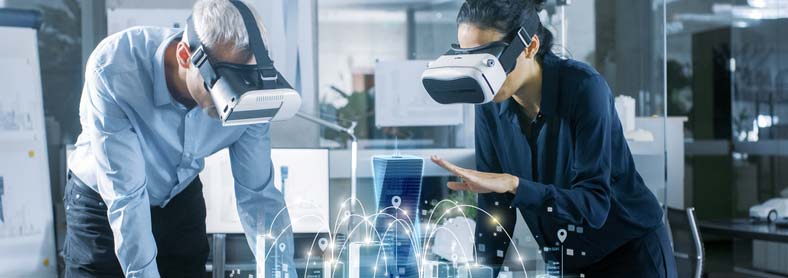Stress and musculoskeletal disorders
Access useful resources to help address sickness absence, staff turnover and other performance issues...
Access useful resources to help address sickness absence, staff turnover and other performance issues...

How seriously should employers take technology and stress? A 2018 report from the CIPD, ‘Health and Wellbeing at Work’ found respondents more likely to say that technology had a more positive than negative impact on wellbeing. This is mainly due to the fact that technology helps make working and communicating more flexible.
Despite this, the CIPD report found that:
It was reported in 2018 that a French arm of Rentokil was ordered to pay a former employee €60,000 (£53,000) for failing to meet the employee’s ‘right to disconnect’. In France, under certain conditions, employers are legally required to draw up a charter setting out when employees are not expected to work (such as sending or receiving emails).
An employee of Rentokil asked to be paid for the time that he was requested to have his phone turned on outside of work to receive urgent calls. Rentokil reportedly denied payment to the employee as they felt having a phone switched on did not mean he was tied to staying at home and was therefore not ‘on call’. A court ruled against Rentokil’s argument. So not only did Rentokil have to back pay a former employee, they also suffered some reputational damage.
Health and Safety Executive (HSE) figures show that during 2016 and 2017 526,000 workers suffered work related stress, with 12.5 million working days lost.
The HSE’s health priority plans include tackling this issue, to reduce the negative impacts on workers and the UK economy. It has stated its aim to see ‘a significant increase in the number of employers taking a proactive (rather than reactive) stance to managing work related stress through the Management Standards Approach’.
Technology at work extends beyond using computers and smart phones away from the office. Some organisations are making good use of technology to improve employee wellbeing. For instance, I’ve seen ‘wellness stations’ installed in offices which measure things like an individual’s weight, blood pressure and BMI. Others have provided employees with wearable tech to encourage physical activity at work.
There’s no getting away from our ever-increasing use of technology, and using it to allow employees to have a degree of control over their work could be beneficial. After all, ‘control’ is one of the Health and Safety Executive’s (HSE) Stress Management Standards – where employees have control over their work pace and organisation, and have a say when breaks from work are taken.

So while tech can play a part in supporting health, safety and wellness through facilities like ‘wellness stations’, employers must ensure they plan its use and consider possible implications. Health and safety policies should state a commitment to supporting the health and wellbeing of employees, to set clear expectations regarding stress awareness and technology use.
Arrangements should explain what stress is, what can cause it, how it can be recognised and what is considered acceptable use of technology. Top level management can support the policy and arrangements by leading by example, perhaps by not sending emails after work hours and respecting automated out of office responses.

If you’re planning to introduce new laptops and mobile devices, or apps such as room and desk booking apps, your company needs to have processes in place to make sure the technology:
It’s a really good idea to consult your employees and gauge stress awareness when planning for new technology – you stand to gain valuable feedback before changes are made. You could go further and set up user testing and feedback sessions, to better understand how well technology is meeting business and user needs – then follow-up with relevant employee training. While millennials are most likely to be confident with technology, others may appreciate a higher level of support and training.
It’s not just work-related technology that can impact stress. Social media sites all have mobile apps that notify users when there has been some sort of activity. Even a casual user of Facebook can receive up to 20 notifications a day – in addition to WhatsApp messages from friends. So it’s not difficult to imagine how many could be received by a more avid social media user: 60, 80 or maybe 100?
A report from the American Psychological Association, Stress in America: Coping with Change, recognises a profile or characteristic they refer to as the ‘Constant Checker’ (those who constantly check their emails, texts and social media accounts). This character type accounted for 43% of Americans who also reported higher level of stress.
While ‘social media stress’ isn’t caused by work, it can genuinely impact it, perhaps from sleepless nights due to excess use, or multiple notifications during the day causing irritation and distraction. If this happens, employers can still offer simple guidance to help employees, such as providing information on how to mute app notifications on phones, or controlling their use in higher hazard environments where concentration is key to carrying out a task safely.
As life expectancy extends, so people are working until much later in their careers. This means you could have up to five generations of employees in your workplace simultaneously, all of whom will have different views and levels of competence when it comes to technology. So stress awareness, flexibility on technology use, and appropriate training provision are particularly important.
If you’re unsure what could be causing employee stress, you can carry out a stress risk assessment to identify stressors, their control measures, and whether enough is being done to reasonably manage the risk.
If your company has no indicators of employee stress levels, or wants to check that control measures identified in stress risk assessments are effective, it’s time for action. Raise stress awareness with a stress survey, which allows your employees to provide feedback on how they feel about work: you can use this information to inform your health and safety aims and objectives.
In addition to the psychological impacts, tech related stress can also be a factor in musculoskeletal discomfort. At System Concepts, our consultants can help you raise stress awareness and manage risks effectively, whether that is through policy development, carrying out technology appraisals, workstation assessments or app design, development and testing. We’re also experienced in delivering stress management training to address significant issues in the workplace.

Get in touch if your organisation needs help managing stress related risk
Access useful resources to help address sickness absence, staff turnover and other performance issues...
Access useful resources to help address sickness absence, staff turnover and other performance issues...
Read how we combined ergonomics, UX and app development skills on an innovative employee wellbeing initiative...
Read how we combined ergonomics, UX and app development skills on an innovative employee wellbeing initiative...
Read the CIPD report on trends in absence, and health and well-being in UK workplaces...
Read the CIPD report on trends in absence, and health and well-being in UK workplaces...